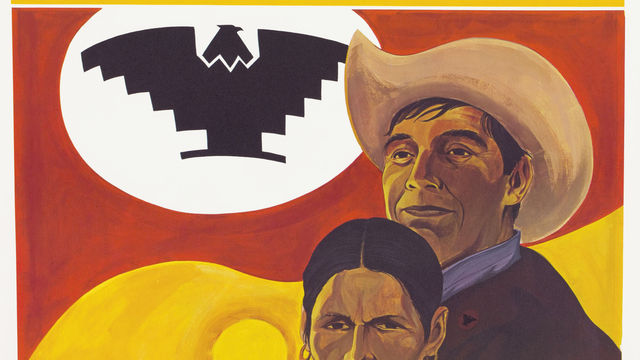
Andrew Zermeño
Part of a larger Chicano civil rights movement that spanned the decade between 1965 and 1975, the Chicano art movement sought to achieve social and aesthetic autonomy on a national level. Artists contributed in numerous ways, from writing songs of struggle to creating posters to drawing political cartoons. Many works related to the movement were produced by or displayed at Mechicano Art Center, making it a gathering place for artists and the greater public. Those involved with the center also interacted with and supported their counterparts in other community art organizations, such as John Outterbridge, who became director of Compton Communicative Arts Academy.
Mechicano Art Center opened in September 1969 in East Los Angeles in response to a need within the Chicano art community for greater visibility. A group of artists led by director Leonard Castellanos got together to share studio space, put together exhibitions, and bring the arts to the neighborhood by offering free art classes to anyone who was interested. With the participation of artists working in fields as diverse as graphic arts, music, and drama, the nonprofit organization is perhaps best known for its public works projects that often encouraged neighborhood participation. These projects not only beautified the physical landscape but also gave inhabitants a sense of pride in both their community and their involvement in it.
Andrew Zermeño, an artist active with the center, was born in 1935 in Salinas, California. He graduated from high school with a scholarship to attend California College of Arts and Crafts, eventually transferring in 1958 to Art Center in Los Angeles (now Art Center College of Design in Pasadena). When Cesar Chavez started the United Farm Workers Union newspaper El Malcriado, he asked Zermeño to draw the political cartoon character of Don Sotaco to educate farmworkers about their rights and to encourage them to join the union. Throughout the late 1960s and into the 1970s Zermeño continued to produce graphic design works, including strike posters and a calendar, to support the union's cause.
Posters, being mass produced and inexpensive, were a particularly appropriate medium for disseminating the movement's message at a time when Chicano art was absent from the walls of museums and galleries. Encompassing mass media and the fine arts, posters make use of both words and images to urge viewers toward action or reflection. They galvanized the community, cultivating collective memory through their depictions of events in both Mexican and Chicano history. Overtly political while remaining distinctly artistic, these posters visually articulated the struggles of an entire community.
In Zermeño's poster Farmworkers Strike to Save Their Union (1971), he renders the central figures in a painterly manner to portray both the individual and the everyman. The grim yet resilient expressions on the central couple's faces are specific, while the figures in silhouette walking across the bottom of the image become anonymous participants with flags and a cross raised in protest. Rising above the people is the logo of the United Farm Workers Union, a bold graphic eagle, and the poster as a whole serves as a call to action to support this cause for the collective good. For Si La Raza no para a Nixon, Nixon aplastará a La Raza (Unless La Raza Stops Nixon, Nixon Will Stomp La Raza) (1968), Zermeño uses a different visual approach to rouse the community. In many posters created for the Chicano civil rights movement, text is as important as image. La raza, meaning literally "the race," is also used to signify people of Chicano or Mexican descent. With the title in Spanish across the top and its English translation below, the poster appeals to all viewers. Text here is directly linked to the meaning of the illustration. A literal depiction of Nixon stomping on the people, the illustration also references the farmworker movement's fight for equal rights.
Though varied in content and style, such posters served as visual evidence of social and political struggles and sought to convey a single clear message to viewers, one that would inspire people to come together and respond. The marriage of politics and art through the medium of the poster—just one of the many projects to benefit the community—brought spirit and change to the Chicano neighborhoods in Los Angeles. Zermeño and other artists involved with Mechicano Art Center helped produce shared experiences and communal pride through opportunities in the arts.
—Connie H. Choi
Selected Exhibitions
The Chicano Artists of the Mechicano Art Center, Vincent and Mary Price Art Gallery, East Los Angeles College, 1971.
Images of Aztlán, University of Southern California Art Galleries, Los Angeles, 1973.
Mechicano at Junior Arts Center, Junior Arts Center, Barnsdall Art Park, Los Angeles, 1973.
Selected Bibliography
Del Olmo, Frank. "Murals Changing Face of East L.A." Los Angeles Times, December 3, 1973.
Loper, Mary Lou. "Giving Her All for Mechicano Center." Los Angeles Times, July 12, 1973.
Noriega, Chon A., ed. Just Another Poster? Chicano Graphic Arts in California. Exh. cat. Santa Barbara: University Art Museum, University of California, Santa Barbara, 2001.
Selz, Peter. Art of Engagement: Visual Politics in California and Beyond. Berkeley and London: University of California Press, 2005.
Ybarra-Frausto, Tomás. "The Chicano Movement/The Movement of Chicano Art." In Beyond the Fantastic: Contemporary Art Criticism from Latin America, 165–82. Edited by Gerardo Mosquera. Cambridge, Mass.: MIT Press; London: Institute of International Visual Arts, 1996.
Selected Links
Farmworker Movement Documentation Project, University of California, San Diego, Library.
Andy Zermeño papers, 1965–1975 finding aid, Special Collections, Charles E. Young Research Library, University of California, Los Angeles.
"Mechicano Art Center," Departures on KCET, November 7, 2011.
"Decade of Dissent: Andy Zermeño," uploaded to YouTube by Center for the Study of Political Graphics, February 12, 2012.


